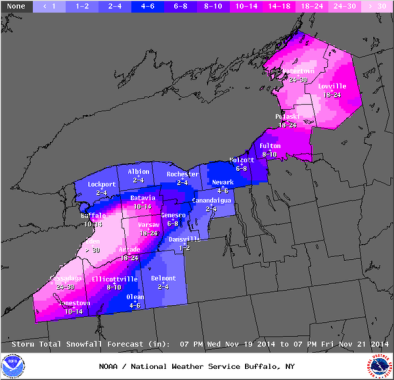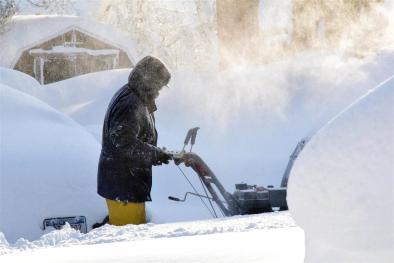Science Source
Sensitivity of Lake-Effect Snowfall to Lake Ice Cover and Temperature in the Great Lakes Region
- Uses high-resolution Weather Research and Forecasting Model (WRF) simulations to explore the sensitivity of Great Lakes lake-effect snowfall (LES) to changes in lake ice cover and surface temperature
- Compares a control simulation with observed ice cover with three sensitivity tests: complete ice cover, no lake ice, and warmer lake surface temperatures
- Finds that the spatial pattern of unfrozen lake surfaces determines the placement of LES, and complete ice cover eliminates it
- Fidns that removal of ice cover and an increase in lake temperatures result in an expansion of the LES area both along and downwind of the lake shore, as well as an increase in snowfall amount
- States that while lake temperatures and phase determine the amount and spatial coverage of LES, the finescale distribution of LES is strongly affected by the interaction between lake surface fluxes, the large-scale flow, and the local lake shore geography and inland topography
- Holds that as a consequence, the sensitivity of LES to topography and shore geometry differs for lakes with short versus long overwater fetch
- Simulations indicate that coarse-resolution models may be able to realistically reproduce the gross features of LES in future climates, but will miss the important local-scale interactions that determine the location and intensity of LES
Related Content
Science Source
| Geophysical Research Letters
Distinctive climate signals in reanalysis of global ocean heat content
Balmaseda, Magdalena A., Trenberth et al
Headline

Feb 15, 2016 | MPR News
Buffalo mega snowstorm tied to climate change?
Headline

Feb 15, 2016 | NBC News
Freezing on East Coast? Blame a Super Typhoon and Maybe Global Warming
Headline

Feb 15, 2016 | AccuWeather
Monster Storm Becomes Strongest on Record for Alaska


